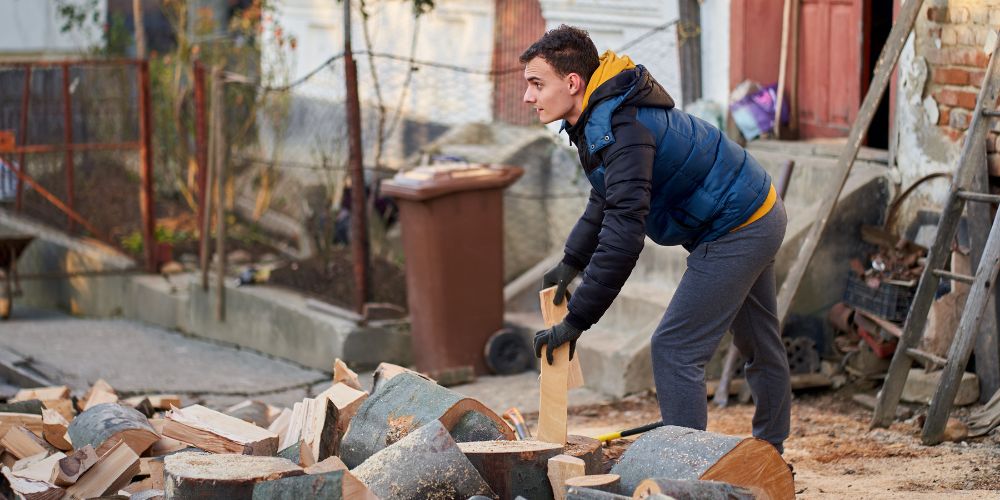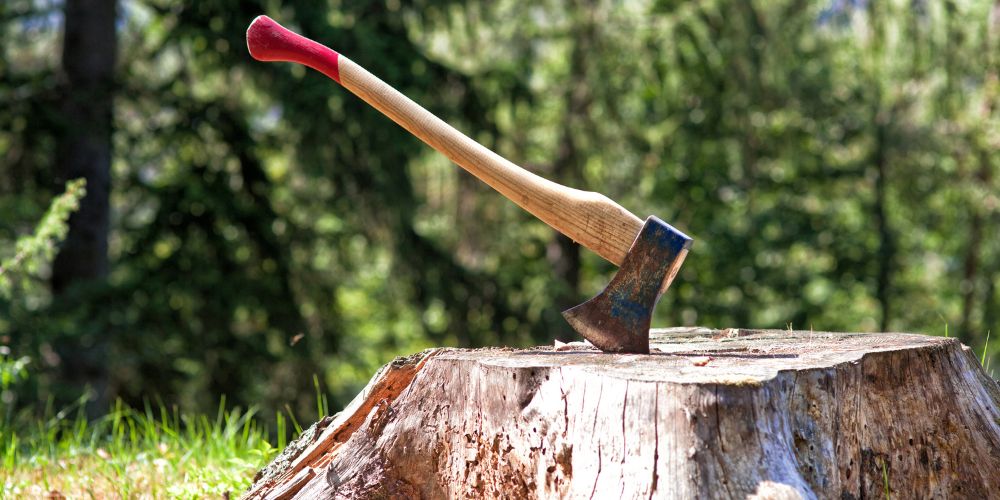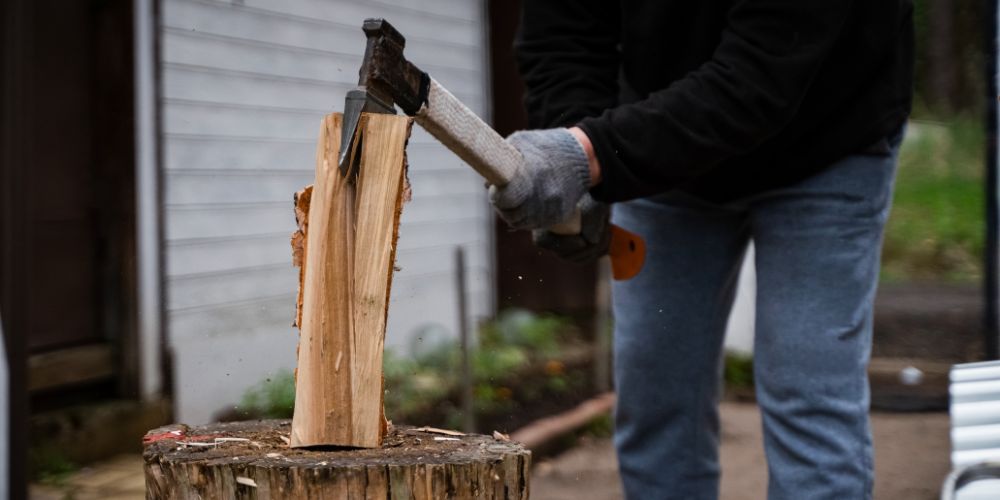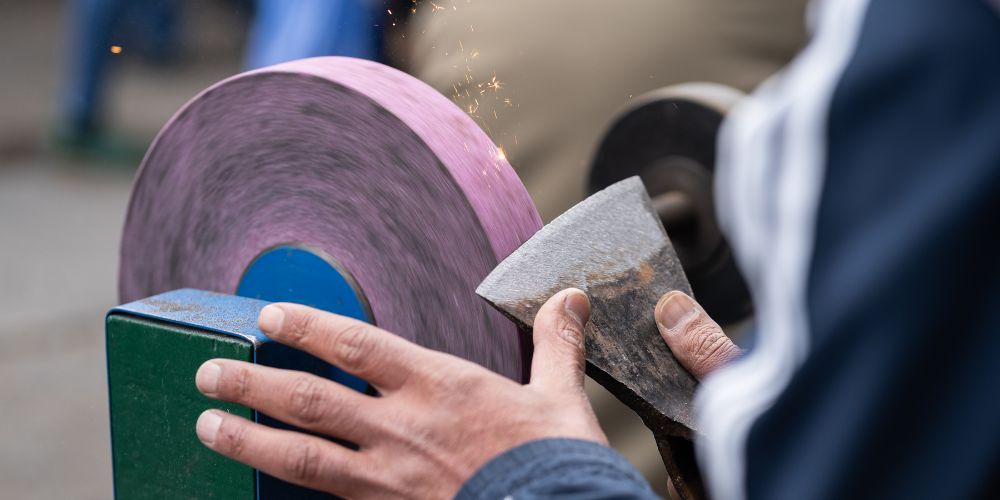Overview
A splitting axe should be sufficiently sharp to easily pierce the wood, but not too sharp to become stuck. The axe’s sharpness is influenced by the blade’s angle and edge, the steel’s grade, and how frequently it is used.
The blade must be routinely sharpened and kept from rusting as part of proper maintenance. Keep your splitting axe dry, store it somewhere cool, and use honing oil or a sharpening stone as needed to keep it sharp.
How Sharp Should a Splitting Axe Be
Anyone who needs to split wood for cooking or heating purposes requires a splitting axe. To guarantee effective and secure use, it is crucial to know how sharp a splitting axe should be. Here are the main elements determining a splitting axe’s sharpness and how to properly maintain it.
Angle and Edge of the Blade
A splitting axe’s sharpness is greatly influenced by the angle and edge of the blade. The degree of the bevel or slope on the blade’s edge is referred to as the blade’s angle. A more acute bevel results from a sharper angle, whereas an obtuse bevel results from a less sharp angle.
The area of the blade that makes contact with the wood is referred to as the edge. The blade may efficiently and neatly cut through the wood if it has a sharp edge.
Use a sharpening stone or file to routinely sharpen the blade to ensure the right angle and edge. For a splitting axe, a sharpening angle of 25 to 30 degrees is optimal since it strikes a compromise between durability and sharpness. To maintain a symmetrical edge, be sure to equally sharpen both sides of the blade.

Quality of the Steel
Another important element in determining the sharpness of a splitting axe is the grade of the steel used in the blade. Since high-quality steel is tougher and more resilient, the blade can keep its edge for a longer time. However, inferior steel could be softer and more prone to swiftly dulling.
Look for a splitting axe made of high-quality steel, such as tool steel or carbon steel, when making a purchase. These steel kinds are strong and can maintain a sharp edge for longer periods of time. However, keep in mind that superior steel could also cost more than inferior options.
Frequency of Use
Another element that influences a splitting axe’s sharpness is how frequently it is used. The axe will need to be sharpened more frequently the more you use it. If you use your axe frequently, you might need to sharpen it every few uses to keep the edge.
Make sure you use the axe properly to prevent causing the blade to sustain excessive wear and tear. The axe should not be used on hard or frozen wood as this can quickly dull the blade. Use the axe on green, softer wood instead; it will be simpler to split and less likely to harm the blade.
Regular Maintenance
A splitting axe must have regular maintenance in order to stay sharp. The blade must be routinely sharpened and kept from rusting as part of proper maintenance. Use a sharpening stone or file to remove any nicks or dull areas from the blade’s edge to sharpen it. To maintain a symmetrical edge, be sure to equally sharpen both sides of the blade.
When not in use, keep the axe dry and store it in a cool, dry location to prevent corrosion on the blade. Dry the blade completely before storing it if it gets damp. To prevent rust and other types of corrosion on the blade, you can also apply honing oil or a rust inhibitor.
FAQs
1. How often should I sharpen my splitting axe?
It depends on how frequently you use your axe. If you use it regularly, you may need to sharpen it after every few uses to maintain its sharpness.
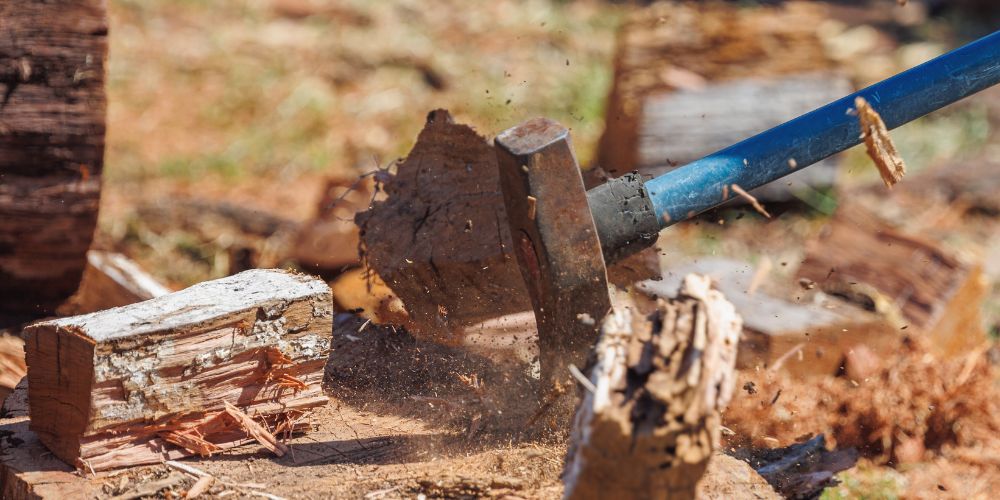
2. What is the ideal angle for sharpening a splitting axe?
The ideal sharpening angle for a splitting axe is between 25 to 30 degrees. This angle provides a balance between sharpness and durability.
3. How do I protect my axe from rust?
To protect your axe from rust, keep it dry and store it in a cool, dry place when not in use. You can also use honing oil or a rust inhibitor to protect the blade from rust and other forms of corrosion.
4. Can I use a dull splitting axe?
Using a dull splitting axe can make splitting wood more difficult and dangerous. A dull blade requires more force to split the wood, which can cause the axe to bounce back or get stuck in the log. It is essential to sharpen the blade regularly to maintain its sharpness.
Conclusion
To achieve effective and secure wood splitting, it is essential to understand how sharp a splitting axe should be. The angle and edge of the blade, the grade of the steel, and the frequency of use are some of the variables that affect how sharp an axe is.
You should periodically sharpen your splitting axe’s blade, keep it from rusting, and steer clear of typical errors such using the wrong grip, posture, or swing style.
